
Just acquired a new specie. Looks like a Golden Torch with 5 red bracts.
On Page 153, of the Helconia An Indentification Guide, there is a strikingly similar looking Heliconia psittacorum x spathocircinata Aristeguieta cv Alan Carle. The dufference being the colur of the bracts, sepals being yellowish rather than reddist as in my specie.
Height
6-7 ft (3-5 ft for cv Alan Carle)
Inflorenscence
Bracts
5-6 bracts with red keel and cheek. (3-6; reddish on most of cheek & keel shading to yellowish on proximal cheek & along lip for cv Alan Carle)

Rachis
Reddish. (Greenish to yellow for cv Alan Carle)
Sepals
Dark greenish on Distal half , orangish on proximal part (Dark green on distal third with light tip, yellow on proximal part for cv Alan Carle)

Ovary
Orange proximal to yellowish distally. (yellow cv Alan Carle)
Pedicel
Orangish (cream or yellowish cv Alan Carle)
Peduncle
Greenish proximaly to reddish distally.

Vegetation
Musoid (like Banana Leaves)

Other Names
Labelled as Golden Opal in Costa Rica.


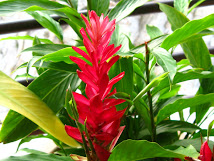
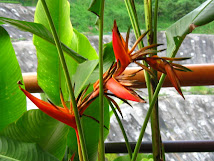


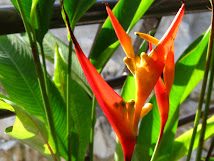
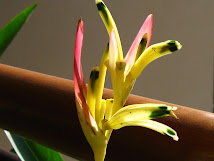

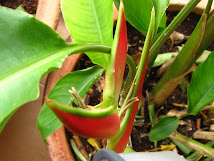


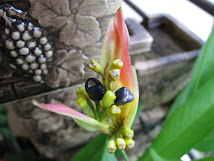
No comments:
Post a Comment